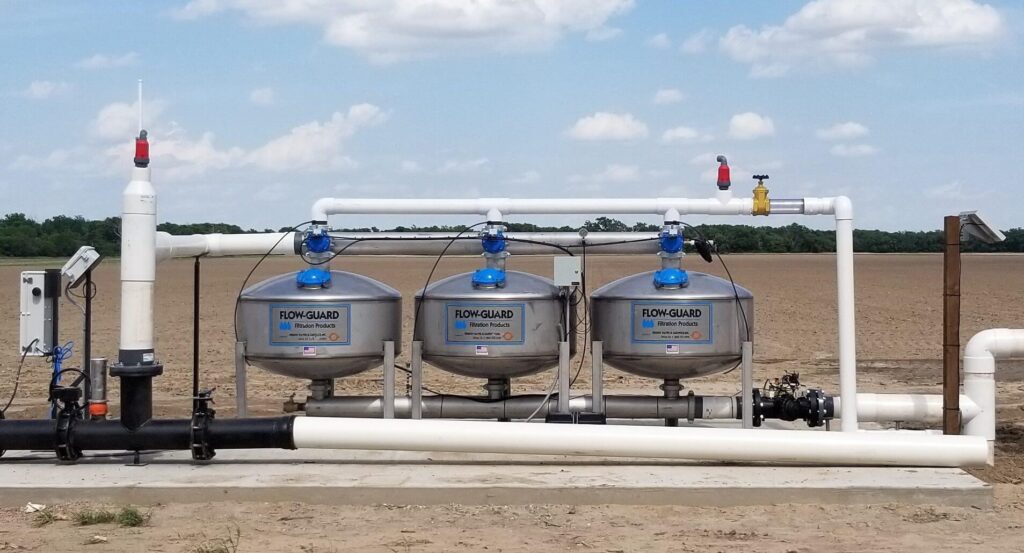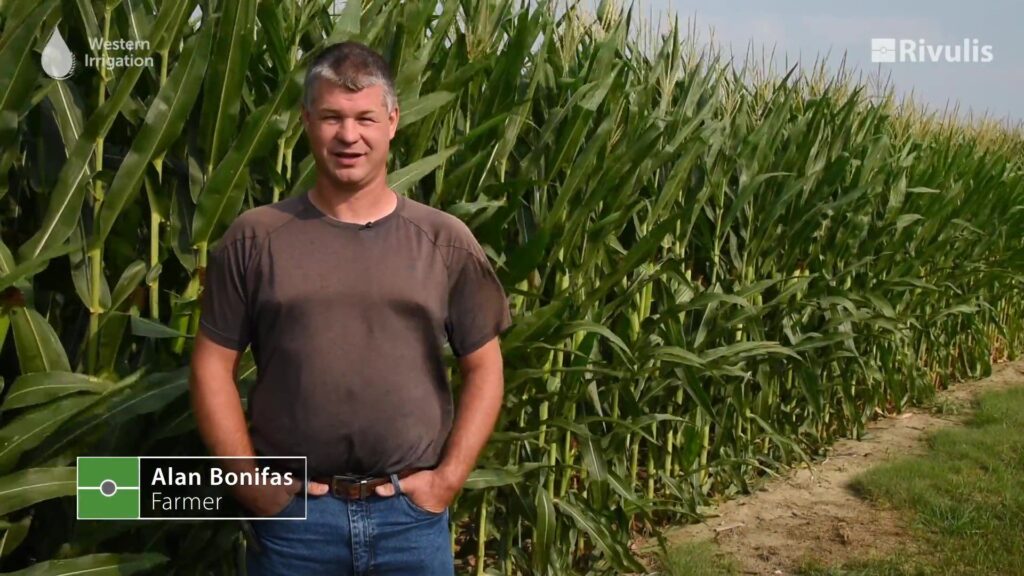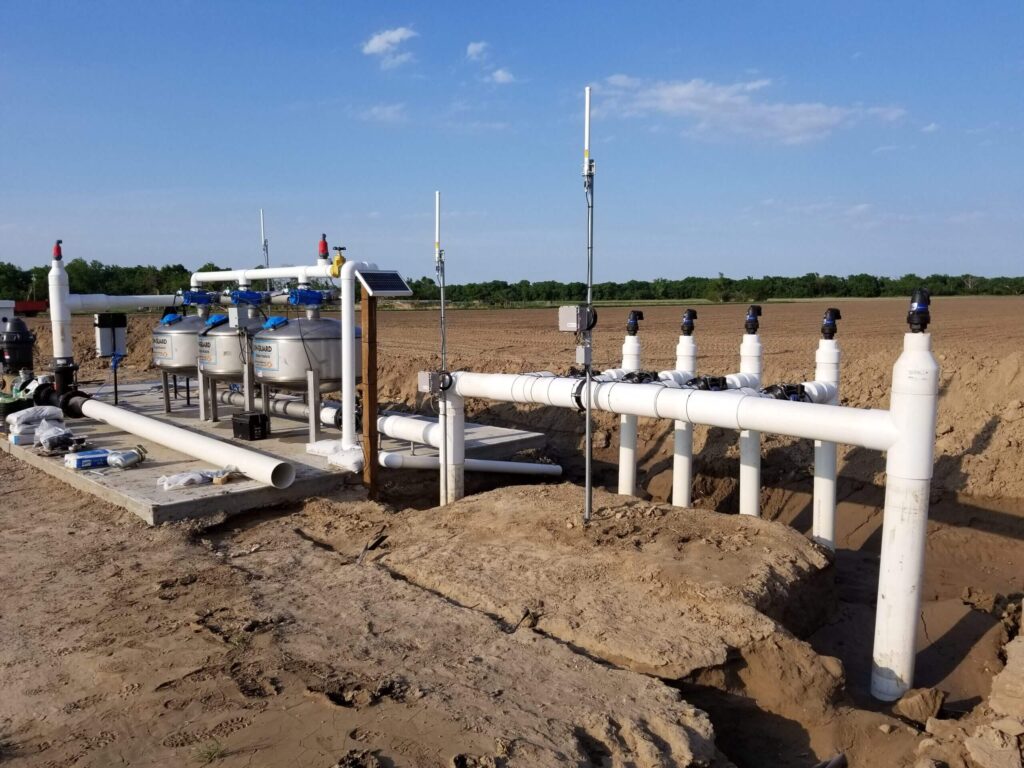Save Water, Grow More: The Advantages of Subsurface Drip Irrigation
As the world’s population continues to grow, so does the demand for food. With dwindling resources and changing climate patterns, farmers are facing increasing pressure to produce more crops while using less water. This challenge has led to advancements in agricultural technology and techniques, one of which is subsurface drip irrigation (SDI). This method involves delivering water directly to plant roots through buried drip lines, resulting in significant water savings compared to traditional surface irrigation methods. In this blog post, we’ll explore the advantages of SDI and how it can help farmers save water while growing higher yields – a win-win situation for both agriculture and our environment.

Understanding Subsurface Drip Irrigation (SDI)
SDI is an innovative irrigation method where water is supplied directly to the plant roots via a network of buried drip lines. This system allows for precise control over water and nutrient delivery, minimizing evaporation and runoff, which are common issues with conventional surface irrigation techniques. By providing a steady supply of water to the plant roots, SDI encourages deeper root growth, improves plant health, and ultimately leads to higher crop yields.
Water conservation is a critical concern in agriculture, particularly in arid regions where water resources are scarce. Agriculture is one of the largest consumers of freshwater globally, hence employing water-efficient irrigation systems like SDI can significantly reduce water usage. This not only contributes to environmental sustainability but also reduces the cost for farmers, making farming more economically viable. By adopting SDI, farmers are able to maintain high crop yields while conserving our precious water resources.
The Benefits of SDI
There are numerous benefits to employing the SDI method in agricultural practices.
- Efficient Water Usage: SDI minimizes water wastage by effectively delivering water directly to the plant roots, reducing evaporation and runoff.
- Increased Crop Yield: By ensuring plants get a consistent and adequate water supply, it promotes healthier, deeper root growth, leading to improved crop yield.
- Cost-Effective: Reduced water usage and higher crop yields translate into cost savings for farmers, making agriculture more economically viable.
- Environmental Sustainability: By conserving water, SDI contributes to environmental sustainability, an increasingly important aspect in the face of climate change and limited natural resources.
- Adaptability: SDI can be employed in various soil types and terrains, and for a diverse range of crops, making it a versatile solution for different farming contexts.
In conclusion, SDI is a beneficial and vital tool in today’s agricultural landscape, addressing both productivity and ecological concerns.
Cost Savings with Subsurface Drip Irrigation (SDI)
SDI (Subsurface Drip Irrigation) presents a significant potential for cost savings in agricultural practices. By efficiently delivering water directly to the plant roots, it minimizes water wastage caused by evaporation and runoff. This not only benefits farmers by reducing water bills, but it also leads to savings on fertilizers and nutrients. The direct application of these resources through the irrigation system enhances their absorption by plants, resulting in more effective utilization.
Moreover, SDI goes beyond cost savings. It contributes to the overall health of crops, promoting increased yields and ultimately generating higher returns on investment for farmers. Additionally, the reduced reliance on surface irrigation helps mitigate soil erosion, preserving the quality of the land and reducing expenses associated with soil repair and maintenance.
While the initial installation cost of SDI may be higher compared to traditional irrigation systems, the long-term benefits of improved resource efficiency and enhanced crop yield make it a worthwhile investment for sustainable agricultural practices. With its ability to optimize water usage, minimize nutrient loss, and protect soil health, SDI offers a comprehensive solution that supports both economic and environmental sustainability in the agricultural sector.

Disadvantages and Limitations of Subsurface Drip Irrigation (SDI)
Despite the numerous benefits of Subsurface Drip Irrigation (SDI), it’s essential to consider its drawbacks and limitations as well.
- Initial Cost: The upfront cost of installing an SDI system can be high, particularly for large-scale farms. This could potentially deter small-scale farmers or those with budget constraints from adopting this technology.
- Maintenance Needs: SDI requires regular maintenance to ensure its efficiency. This includes frequent system checks and the cleaning or replacement of filters to prevent clogging of drip lines.
- Rodent Damage: Rodents can cause damage to the buried drip lines, leading to water leakage and inefficiency in the system.
- Skill Level: Successful use of SDI requires a certain level of technical knowledge and skills for installation, operation, and maintenance. This could be a barrier for farmers who have limited access to training and resources.
- Uneven Water Distribution: In sandy soils, water might not spread laterally as much as it does in clay or loam soils. This could lead to uneven water distribution, affecting crop growth.
While these challenges are significant, the potential benefits of SDI in terms of water efficiency, increased crop yield, and cost-effectiveness remain compelling. With proper planning, training, and regular maintenance, many of these challenges can be mitigated, making SDI a viable and sustainable irrigation solution for the future of agriculture.
Environmental Benefits of Subsurface Drip Irrigation (SDI)
Subsurface Drip system carries significant environmental benefits that contribute towards a sustainable future.
- Water Conservation: By delivering water directly to the plant roots, SDI minimizes water wastage through evaporation and runoff. This efficiency contributes to the conservation of our vital water resources.
- Reduced Soil Erosion: As SDI avoids the need for surface irrigation, the risk of soil erosion is significantly reduced, thereby maintaining soil health and structure.
- Lower Carbon Footprint: SDI systems typically require less energy to operate compared to traditional irrigation methods, thereby reducing the greenhouse gas emissions associated with farming.
- Protection of Water Quality: By minimizing runoff, SDI reduces the amount of fertilizers and pesticides that can leach into nearby water bodies, thus protecting water quality.
- Preservation of Biodiversity: Efficient water use and reduced chemical runoff help to create a healthier environment for surrounding wildlife, contributing to the preservation of biodiversity.
In light of these benefits, SDI plays an essential role in promoting environmentally sustainable agriculture.
How to Implement Subsurface Drip Irrigation
Implementing Subsurface Drip Irrigation (SDI) involves a series of steps to ensure a successful installation:
- Site Evaluation: Begin by assessing the soil type, topography, and size of the agricultural land. This will aid in determining the layout of the SDI system.
- Water Source and Quality Assessment: Check the water source for availability and quality. Water with high mineral or organic content can lead to clogging in the drip lines.
- Design and Planning: Develop a system design considering the crop type, soil characteristics, and water availability. The design should include the placement of drip lines, filters, and the water source.
- Installation: Install the SDI system as per the design with appropriate spacing of the drip lines to ensure uniform water distribution.
- System Test: Conduct a thorough system test to identify and rectify any leaks or malfunctions.
- Operation and Maintenance: Regularly inspect and maintain the system to ensure its longevity and efficiency. This includes cleaning filters and checking for leaks or rodent damage.

By following these steps, farmers can successfully implement an SDI system, optimizing water usage, and enhancing crop yield. Proper installation and maintenance are crucial to the long-term success of Subsurface Drip Irrigation.
In conclusion, Subsurface Drip Irrigation (SDI) is a sustainable and efficient irrigation system that offers numerous benefits for the agricultural sector. While there are challenges to its implementation, proper planning, training, and maintenance can help mitigate these limitations. With its potential to conserve water, protect soil health, and promote economic sustainability, SDI is a valuable solution for the future of agriculture. By implementing SDI, farmers can not only increase their yields but also contribute towards a greener and more sustainable future. So, it is important for agricultural communities to educate themselves about this technology and consider its implementation for the betterment of their farms and the environment as a whole.
